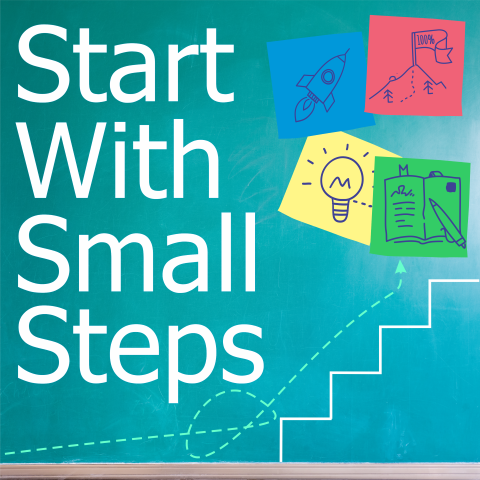We live in a world that constantly demands trust—trust in relationships, trust in leadership, trust in our communities. But what happens when your early experiences teach you the opposite? This is the question at the heart of today’s reflection. Whether you’ve faced betrayal, neglect, or simply grown up learning to rely only on yourself, rebuilding your sense of trust can feel overwhelming. Yet, trust is not a luxury—it’s a human need. It’s the foundation of connection, collaboration, and emotional health. So how do we learn to trust again, especially when our past tells us not to?
Trust Begins with Observation
The path to trust often begins with observation. Growing up in a household where reliability was scarce, the speaker learned early to be cautious. A brilliant but troubled father, inconsistent friends, and mixed experiences with teachers formed a worldview where trust was risky. It’s not surprising, then, that she considered isolating herself. But humans aren’t meant to live as islands. Watching others with healthy, supportive relationships sparked a realization: while trust can hurt, isolation hurts more.
Defining the Circle of Trust
Trust doesn’t have to be all or nothing. It can exist in layers. Some people are safe for casual conversations, others for deeper personal issues, and maybe a rare few with whom you share your full, vulnerable self. The idea of a “circle of trust” helps to create clarity. This tight-knit group, often very small, becomes the anchor of emotional safety. It’s a practical model for those with a history of distrust. Rather than closing off completely, it’s about filtering wisely.
The Trust Equation
One concept that helps demystify how we build trust is the Trust Equation:
Trust = (Credibility + Reliability + Intimacy) ÷ Self-Orientation
- Credibility: Can you believe what the person says?
- Reliability: Do they do what they say they’ll do?
- Intimacy: Can you feel safe and emotionally open with them?
- Self-orientation: Are they focused on you and the relationship, or mainly on themselves?
This framework brings structure to what often feels like a gut instinct. It encourages intentional reflection about who we let in and why.
The Halo Effect: Why Appearances Mislead Us
One major barrier to trust is something called the halo effect—when we assume someone is trustworthy simply because they’re charming, attractive, or successful-looking. It’s a trap. People who “look the part” often win trust prematurely, bypassing deeper assessments of character. In the workplace, the charming manager gets praise, while the loyal but quiet employee is overlooked. In relationships, people fall for looks and charisma, ignoring red flags.
The reminder here is to look past the surface. Reliability, empathy, and authenticity matter more than a perfect suit or a charming smile.
Avoidance and Anxious Attachment Styles
Psychologists Bowlby and Ainsworth identified attachment styles that shape how we form relationships. If you grew up without dependable caretakers, you may develop an avoidant style—keeping people at arm’s length. Others may become anxious, seeking closeness but fearing abandonment. Understanding your attachment style can help explain why trust feels so difficult.
The speaker shares her own avoidant leanings—keeping people out to stay safe. But with time and reflection, she began to take calculated risks to let others in, starting small and building over time.
Trust Isn’t Static—It’s Built
One key takeaway is that trust isn’t a switch you flip. It’s a process. It grows slowly through:
- Consistency over time
- Vulnerability in small doses
- Observing patterns, not promises
- Watching how someone handles mistakes
A single betrayal can destroy years of progress. But for someone with past wounds, one act of kindness can start rebuilding a bridge. The important thing is to let that rebuilding happen—without rushing it.
Realistic Expectations and Second Chances
Past experiences often make us overly strict. “One wrong move and I’m done,” the speaker admits. But sometimes people make mistakes without malicious intent. Part of growing in trust is learning discernment—not naivety, but also not a hair-trigger cutoff for every flaw. Trustworthy people show remorse, accountability, and a desire to repair. They’re worth a second look.
Final Thoughts: Why Trust Is Worth the Risk
Why even bother? Why risk being hurt again? The answer is simple but powerful: we need each other. We were built for connection. Real, honest relationships make life richer. They give us the courage to grow, to change, and to live fully.
Not everyone deserves your trust. But someone does. And finding that someone starts with small steps—shared laughs, thoughtful conversations, moments of vulnerability. When you do find people who are loyal, empathetic, and consistent—hold onto them. They’re rare. And they’re worth the risk.
Conclusion: Trust is a Choice and a Practice
Relearning trust isn’t easy. It takes time, wisdom, and sometimes courage you didn’t think you had. But it’s possible. And it’s worth it. You deserve rich, meaningful relationships built on honesty and respect. Start small. Choose someone who’s earned your trust. Be someone who earns theirs. And from there, life becomes a little fuller, a little warmer, and a whole lot more human.

